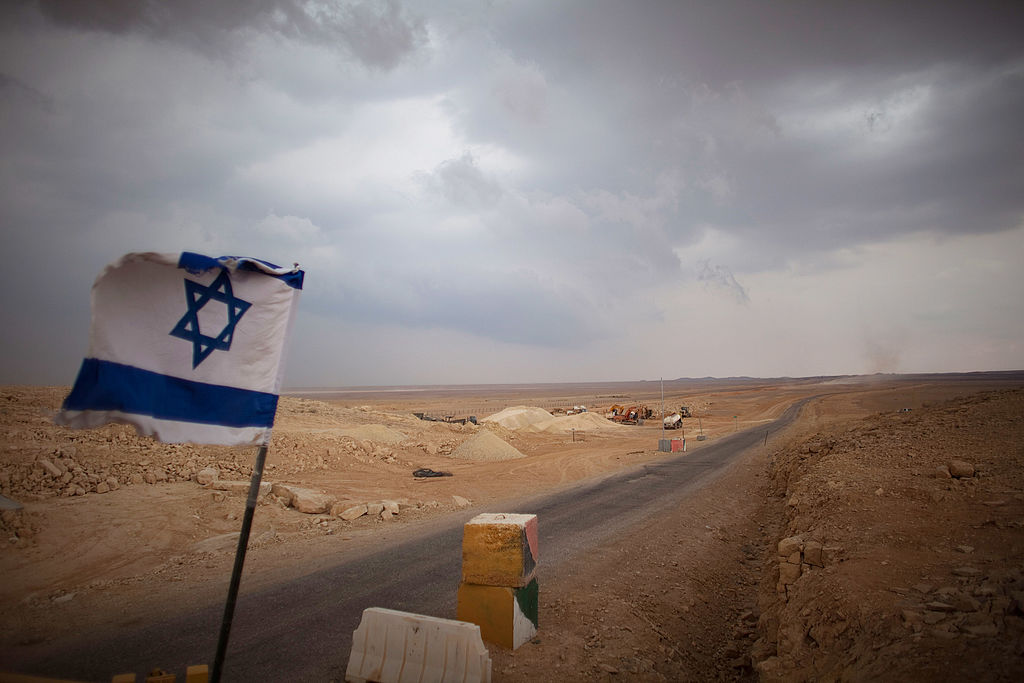Israel is fighting for its life. While the White House remains convinced that it is possible to somehow contain the conflict to Gaza, Israel’s security establishment is nervously looking north to Lebanon, where a second front in the war has already started to open. The 7 October massacre was the first act in a decade-old plan for the Iran-backed ‘Axis of Resistance’ – Hamas, Hezbollah, and Palestinian Islamic Jihad. The end goal is not, as it was for Egypt in 1973, to recover lost territory. The goal is no less than the destruction of Israel, either by political or military means.
For months, something has been afoot. On 9 April, the leaders of the Axis met in a Beirut bunker. In the background, there were large portraits of two men: the ‘Father of the Islamic Revolution’, Ruhollah Khomeini, and his successor, Ali Khamenei. Since then, meetings between those factions and Iranian officials have taken place on a monthly basis. In the lead-up to 7 October, Iran and its proxies in Syria were equally busy. Thousands of fighters moved from Iraq to Iranian bases in northeast Syria, in addition to large numbers of drones and ballistic missiles. A prescient few drew attention to this in the spring; their warnings were not heeded. In hindsight, the purpose of those meetings was probably to prepare the multi-stage trap in which Israel now finds itself.
Since 2012, the Axis, led by Hezbollah Secretary-General Hassan Nasrallah, has had its sights on the Golan Heights and the Galilee. In 2013, Hezbollah created ‘Green Without Borders’, supposedly an environmental NGO to protect Lebanon’s environment, but which in fact serves as cover for Hezbollah warehouses. It has even planted trees to obscure Israel’s security cameras along its northern border. Its leader, Zuhair Nahla, who pledged loyalty to Iran’s Ayatollah Khamenei in a Facebook post, called the trees the ‘shade of resistance’. More recently, Hezbollah has made a more active effort to ‘blind’ Israel in the north, using anti-tank guided missiles and sniper fire to destroy radar posts, signal bases, and security cameras. Shutting off Israel’s eyes and ears lays the ground for the second stage of the intervention: the physical invasion of Israel’s north.
The Axis’s goal would be to overwhelm Israel with two fronts
In March this year, a gag order was placed on a major security incident in the northern city of Meggido. The ‘Wolves of the Galilee’ smuggled a bomb into Israeli territory. In June, Hezbollah set up two armed encampments more than 100 feet inside Israeli territory. The threat of another infiltration is now so pressing that some 28 Israeli towns and villages five kilometres from the Lebanese border have been evacuated, with the IDF carrying out missile attacks in southern Lebanon.
Hezbollah is not acting alone. Its Unit 125, a group of around 15 battalions, that specialises in infiltration into Israel using paragliders, rafts, and scuba gear, has shared its tactics with other Iranian proxies. For months, Iraqi militants have teemed into southern Syria, with some taking pictures of themselves looking into Israel from the Syrian Golan. Other militias have joined them. Harakat Hezbollah al-Nujaba also claimed to have 10,000 men in Syria back in 2018. Mohammed al-Tamimi, the secretary-general of Faylaq al-Wa’ad al-Sadiq, has claimed that his ‘resistance fighters’ are waiting for the ‘zero hour’. Conservative Israeli estimates claim that 50,000 Iran-backed foreign fighters are gathered in Syria. Pessimists say more than 100,000.
How would an invasion work? In a nightmare scenario, Hezbollah would devastate Israel’s northern front line with thousands of artillery rockets, mortars, precision missiles, and suicide drones. In a first punch, Hezbollah would probably launch a large-scale attempt to infiltrate the north: like 7 October but on an even larger scale. In a push across the northern tier, Hezbollah could take some ground before being beaten back. The seemingly obvious trigger for a ‘complete second front’ is an Israeli ground manoeuvre in Gaza, which would require a significant commitment of Israeli soldiers, armour, and aircraft. The Axis’s goal would be to overwhelm Israel with two fronts, prompting either complete military collapse, an incomplete but humiliating military defeat, or an overwhelming intervention that would destroy Israel’s reputation internationally – and possibly that of the United States.
The words of one Islamic Revolutionary Guard Corps-linked commentator are worth quoting in full:
If a battle starts on another axis, [Israel’s] complete collapse is an option … To destroy the power of the resistance in Gaza, they will deploy all of their resources to compensate for this unprecedented and historic humiliation… war will start from the Lebanese side whether they want it or not… if the Zionist regime wants war, the entry of the Lebanese Resistance into the conflict will mean [that] Northern Palestine will be evacuated and filled with Palestinian refugees from Lebanon… [and] this will be the end of the Zionist regime.
How can Israel address this threat? There is no clear way out. The Axis is also clearly betting on the drag of an upcoming US election and decades of failed Iran policy. There is a small possibility that Israel, at some cost, comes out of the fight with a genuine victory. If it can roll back Iran’s proxy on its northern border, it will regain some of its freedom of action in the broader region. But this is no real happy ending. It is years in the making.






Comments